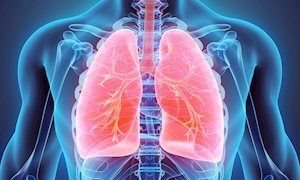9 June 2020
The E-Predict Multicenter Study, designed and coordinated by the Radboudumc’s departments of Interventional Pulmonology and Medical Ultrasound Imaging Center (MUSIC) is the first study utilizing a validated and standardized assessment protocol to show the added predictive value of EBUS-Strain Elastography in a multicenter prospective study, conducted in five European hospitals. This study confirms our earlier single-center study that showed an association between lymph node stiffness and presence of lymph node malignancy when measured using relative strain elastography imaging with strain histogram evaluation during EBUS staging procedures. In this multicenter study, we show that strain elastography is an independent predictive variable.
Furthermore, we show that EBUS-SE can be used in conjunction with EBUS lymph node short axis size and FDG-PET imaging to help better select which nodes must be further evaluated. Using two clinical scenarios, we show how EBUS-SE can help stratify the risk of malignancy. The addition of EBUS-SE in clinical practice could increase EBUS-TBNA staging accuracy. It might help intraprocedural decision making in cases of multiple nodes within a region or unrepresentative rapid onsite cytological examination or in the decision making on further work-up after EBUS-TBNA in cases of unrepresentative cytology findings.
Publication
Predictive Value of Endobronchial Ultrasound Strain Elastography in Mediastinal Lymph Node Staging: The E-Predict Multicenter Study Results
Verhoeven R.L.J. · Trisolini R. · Leoncini F. · Candoli P. · Bezzi M. · Messi A. · Krasnik M. · de Korte C.L. · Annema J.T. · van der Heijden E.H.F.M.
In this multicenter study a system developed and validated by Roel Verhoeven and Erik van der Heijden has been used previously. Published (2019)
Optimal Endobronchial Ultrasound Strain Elastography Assessment Strategy: An Explorative Study

The E-Predict Multicenter Study, designed and coordinated by the Radboudumc’s departments of Interventional Pulmonology and Medical Ultrasound Imaging Center (MUSIC) is the first study utilizing a validated and standardized assessment protocol to show the added predictive value of EBUS-Strain Elastography in a multicenter prospective study, conducted in five European hospitals. This study confirms our earlier single-center study that showed an association between lymph node stiffness and presence of lymph node malignancy when measured using relative strain elastography imaging with strain histogram evaluation during EBUS staging procedures. In this multicenter study, we show that strain elastography is an independent predictive variable.
Furthermore, we show that EBUS-SE can be used in conjunction with EBUS lymph node short axis size and FDG-PET imaging to help better select which nodes must be further evaluated. Using two clinical scenarios, we show how EBUS-SE can help stratify the risk of malignancy. The addition of EBUS-SE in clinical practice could increase EBUS-TBNA staging accuracy. It might help intraprocedural decision making in cases of multiple nodes within a region or unrepresentative rapid onsite cytological examination or in the decision making on further work-up after EBUS-TBNA in cases of unrepresentative cytology findings.
Publication
Predictive Value of Endobronchial Ultrasound Strain Elastography in Mediastinal Lymph Node Staging: The E-Predict Multicenter Study Results
Verhoeven R.L.J. · Trisolini R. · Leoncini F. · Candoli P. · Bezzi M. · Messi A. · Krasnik M. · de Korte C.L. · Annema J.T. · van der Heijden E.H.F.M.
In this multicenter study a system developed and validated by Roel Verhoeven and Erik van der Heijden has been used previously. Published (2019)
Optimal Endobronchial Ultrasound Strain Elastography Assessment Strategy: An Explorative Study
Related news items

KWF grant for better selection of individuals and lung nodules in lung cancer screening
1 November 2021 The Dutch Cancer Society has awarded the consortium project ‘Multi-source data approach for Personalized Outcome Prediction in lung cancer screening’ with a grant of 1,425,000 Euro. Colin Jacobs will lead the work package on using artificial intelligence for accurate risk estimation of lung nodules. go to page
Anti-tuberculosis drug can be safely dosed even higher
16 March 2021 A considerably higher dose of the anti-tuberculosis drug rifampicin is safe and can also lead to a shorter treatment for tuberculosis and less resistance. go to page
Radiation boost lowers risk of prostate cancer recurrence
21 January 2021 An additional external-beam radiation dose delivered directly to the tumor can benefit the prospects of men with non-metastatic prostate cancer, without causing additional side effects. The risk of relapse within five years for these men is smaller than for men who did not receive this boost. go to page
650,000 Euro funding for research into the phasing out of medication for leukaemia patients
30 July 2020 With a 650,000 euro funding from ZonMw, researchers from the Haematology and Pharmacy departments can develop a medication phasing out strategy for patients with chronic myeloid leukaemia. This strategy will be tested in practice. go to page
Improved method for detecting lung cancer
24 July 2020 Radboudumc researchers are the only ones in the Netherlands using a new method to make better lung cancer diagnoses earlier stage. Erik van der Heijden and Roel Verhoeven shows that the use of flexible imaging equipment via the natural respiratory tract contributes to a more accurate diagnosis. go to page
